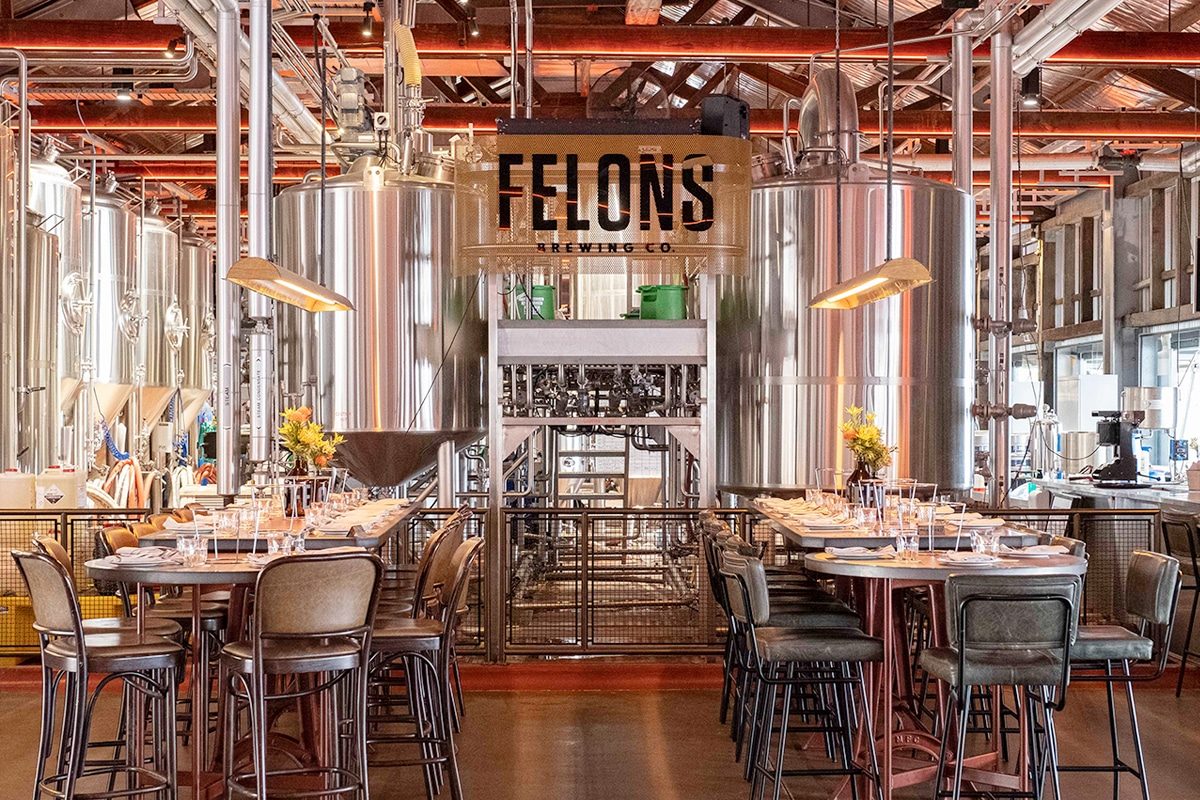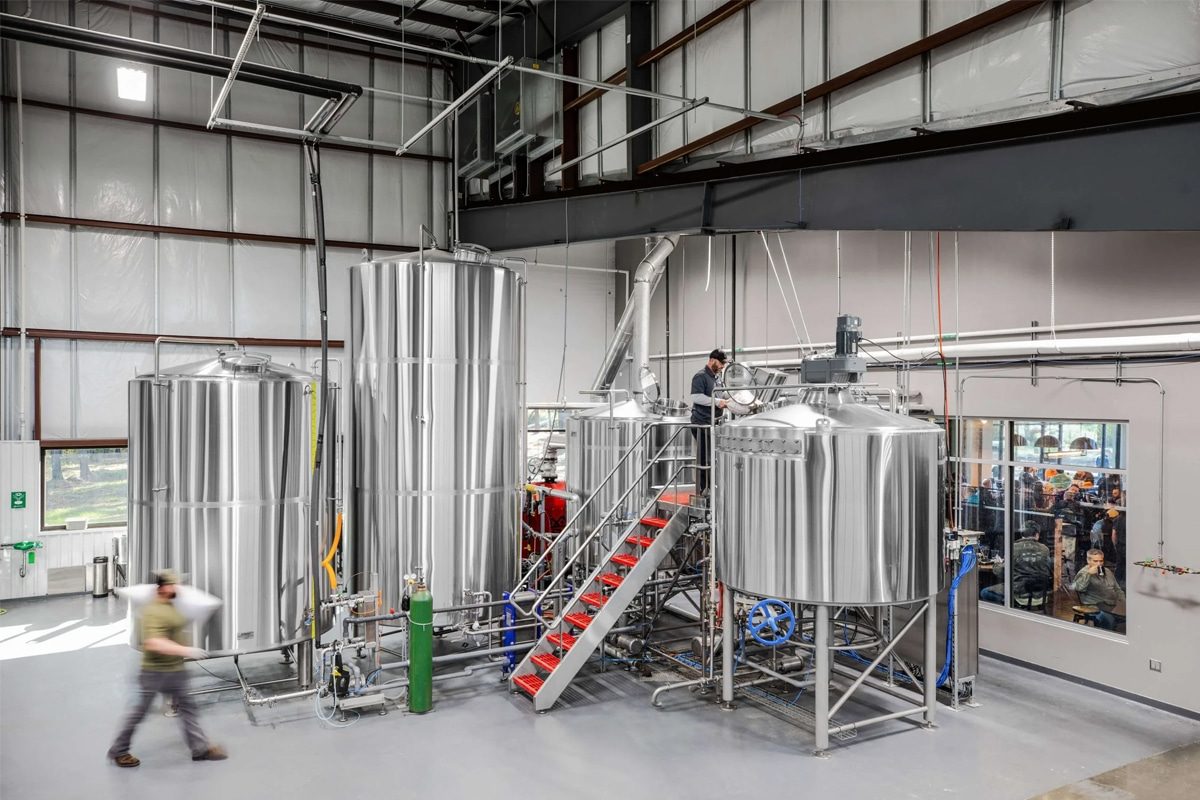
Choosing the Right Size Brewery For Your Craft Beer Business
Complete Guide
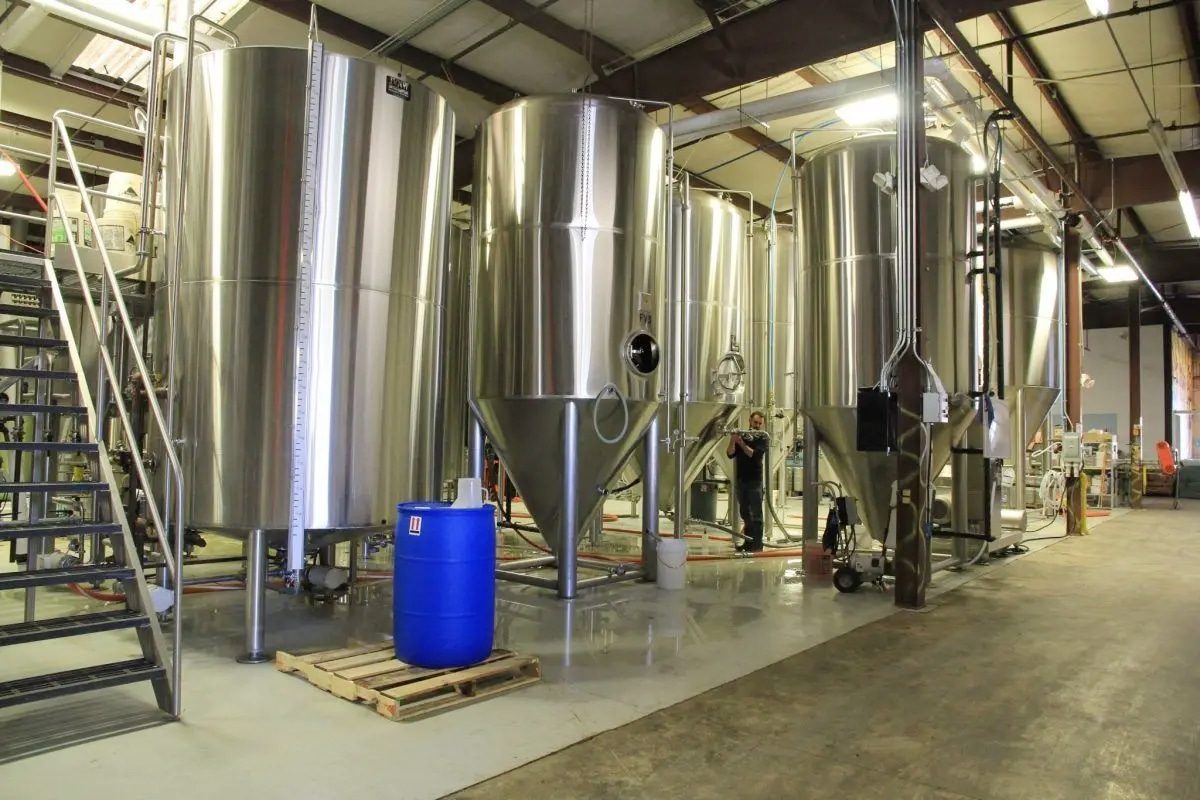
Understanding Brewery Sizes
Nano-Breweries
Advantages
- Intimate brewing experience: Nano-breweries offer brewers a hands-on approach to crafting beer, allowing for greater experimentation and creativity.
- Strong community connection: With a focus on local markets and personal interactions, nano-breweries foster close relationships with customers and communities.
- Flexibility and agility: The small scale of nano-breweries enables quick adjustments to recipes, ingredients, and brewing techniques, facilitating rapid adaptation to changing consumer preferences.
Challenges
- Limited production capacity: Due to their small size, nano-breweries have minimal production capacity, which can constrain growth and scalability.
- Economies of scale: Nano-breweries may struggle to achieve cost efficiencies compared to larger breweries, leading to higher production costs and potentially lower profit margins.
- Distribution challenges: While nano-breweries excel at serving local markets and taproom patrons, expanding distribution beyond their immediate area can be challenging due to limited production volumes.
Microbreweries
Advantages
- Local focus with broader reach: Microbreweries strike a balance between local authenticity and broader market appeal, catering to regional tastes while expanding their reach through selective distribution.
- Brand differentiation: Microbreweries have the flexibility to experiment with diverse beer styles, flavors, and brewing techniques, allowing them to carve out a unique identity in a crowded market.
- Direct consumer engagement: With taprooms and brewpubs as primary outlets, microbreweries can cultivate direct relationships with customers, offering immersive tasting experiences and fostering brand loyalty.
Challenges
- Production scalability: While larger than nano-breweries, microbreweries may still face challenges in scaling production to meet growing demand, requiring careful planning and investment in equipment and infrastructure.
- Distribution logistics: As microbreweries expand their reach beyond taproom sales, managing distribution channels, logistics, and relationships with wholesalers can become increasingly complex.
- Competitive pressures: In an increasingly competitive market, microbreweries must differentiate themselves through quality, innovation, and effective marketing to stand out amidst a sea of options for consumers.
Regional Breweries
Advantages
- Expanded distribution reach: Regional breweries leverage economies of scale to distribute their products more widely, reaching consumers across multiple markets and geographic regions.
- Brand recognition and loyalty: With broader distribution and marketing reach, regional breweries can build strong brand recognition and loyalty among consumers, establishing themselves as trusted purveyors of quality craft beer.
- Operational efficiency: Regional breweries benefit from larger production volumes and streamlined operations, enabling greater efficiency in brewing, packaging, and distribution processes.
Challenges
- Increased competition: As regional breweries grow in size and stature, they face heightened competition from both established breweries and up-and-coming craft beer brands vying for market share.
- Maintaining quality and consistency: With larger production volumes and distribution footprints, regional breweries must prioritize quality control and consistency to ensure that their beers meet consumer expectations across diverse markets.
- Market saturation: In some regions, the craft beer market may become saturated with breweries competing for limited shelf space and consumer attention, requiring regional breweries to differentiate themselves through innovation, branding, and marketing strategies.
Large-Scale Breweries
Advantages
- National and international reach: Large-scale breweries have the resources and infrastructure to distribute their products across vast territories, reaching millions of consumers in diverse markets.
- Economies of scale: With massive production volumes and efficient brewing processes, large-scale breweries benefit from economies of scale, driving down production costs and maximizing profitability.
- Brand power and recognition: Large-scale breweries often enjoy strong brand recognition and loyalty, leveraging their market presence and marketing resources to maintain a dominant position in the craft beer landscape.
Challenges
- Maintaining authenticity and craft ethos: As large-scale breweries grow in size and scope, they may face criticism from purists who question their commitment to craft brewing principles and authenticity.
- Market consolidation and competition: In an increasingly consolidated market, large-scale breweries must contend with fierce competition from both traditional beer giants and a growing number of craft beer challengers, requiring strategic positioning and innovation to stay ahead.
- Consumer perception and loyalty: Some consumers may perceive large-scale breweries as less authentic or artisanal compared to smaller craft breweries, posing challenges in maintaining brand loyalty and consumer trust.
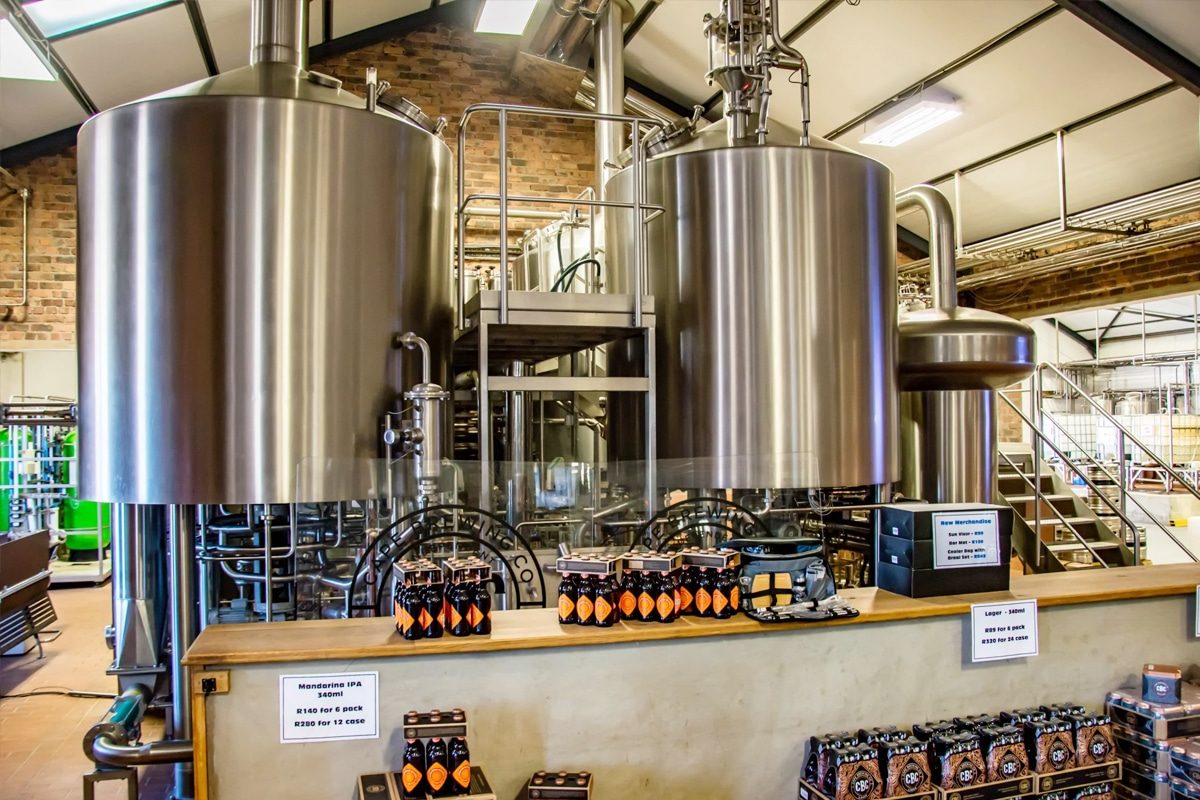
Market Analysis and Demand Forecasting
Understanding Market Dynamics
Craft beer is a dynamic and ever-evolving industry, influenced by shifting consumer preferences, emerging trends, and regional market dynamics. Conducting a comprehensive market analysis allows you to gain a deeper understanding of the landscape in which your brewery will operate. Key components of market analysis include:
- Consumer Preferences: Explore the tastes, preferences, and purchasing behavior of craft beer consumers in your target market. Consider factors such as preferred beer styles, flavor profiles, packaging preferences, and price sensitivity.
- Competitive Landscape: Assess the competitive environment in your area, identifying existing breweries, their offerings, market positioning, and strengths and weaknesses. Analyze their market share, distribution channels, and branding strategies to identify opportunities for differentiation.
- Demographic Trends: Consider demographic factors such as population size, age distribution, income levels, and cultural diversity. These factors can influence consumer demand for craft beer and inform your target market strategy.
- Market Saturation: Evaluate the level of market saturation in your area, including the number of breweries per capita, the availability of craft beer options, and the degree of competition. Determine if there are underserved market segments or niche opportunities that your brewery can capitalize on.
Forecasting Demand
Forecasting demand is a critical aspect of brewery planning, allowing you to anticipate future sales volumes, production needs, and resource requirements. While demand forecasting involves some degree of uncertainty, particularly in a rapidly evolving industry like craft beer, it provides valuable insights that can inform your brewery size decision. Key steps in demand forecasting include:
- Historical Data Analysis: Analyze historical sales data, market trends, and seasonal fluctuations to identify patterns and trends in consumer demand. Look for factors that may influence demand, such as holidays, festivals, and local events.
- Market Research: Conduct surveys, focus groups, or interviews with potential customers to gather insights into their beer preferences, consumption habits, and purchase intent. Use this data to validate assumptions and refine your demand forecast.
- Scenario Planning: Develop multiple demand scenarios based on different assumptions and variables, such as market growth rates, competitive dynamics, and economic conditions. Consider best-case, worst-case, and most likely scenarios to assess the range of possible outcomes.
- Industry Trends: Stay abreast of industry trends, innovations, and developments that may impact consumer demand for craft beer. Monitor shifts in consumer preferences, emerging beer styles, and market disruptors to adapt your forecasting models accordingly.
Incorporating Demand Forecasts into Brewery Planning
Once you have forecasted demand for craft beer in your target market, it’s essential to incorporate these projections into your brewery planning process. Consider how demand forecasts will influence key decisions such as:
- Brewery Size: Choose a brewery size that aligns with your projected sales volumes and production needs. Ensure that your production capacity can meet forecasted demand while allowing for future growth and scalability.
- Equipment Investment: Select brewing equipment and infrastructure that can accommodate forecasted production volumes and process efficiencies. Invest in equipment upgrades or expansions as needed to scale up production in response to growing demand.
- Distribution Strategy: Develop a distribution strategy that aligns with forecasted demand and market dynamics. Determine the optimal mix of direct-to-consumer sales, taproom distribution, and wholesale distribution channels based on projected sales volumes and customer preferences.
- Marketing and Branding: Tailor your marketing and branding efforts to resonate with target consumers and capitalize on forecasted demand trends. Craft messaging, packaging, and promotional activities that appeal to the preferences and aspirations of your target market.
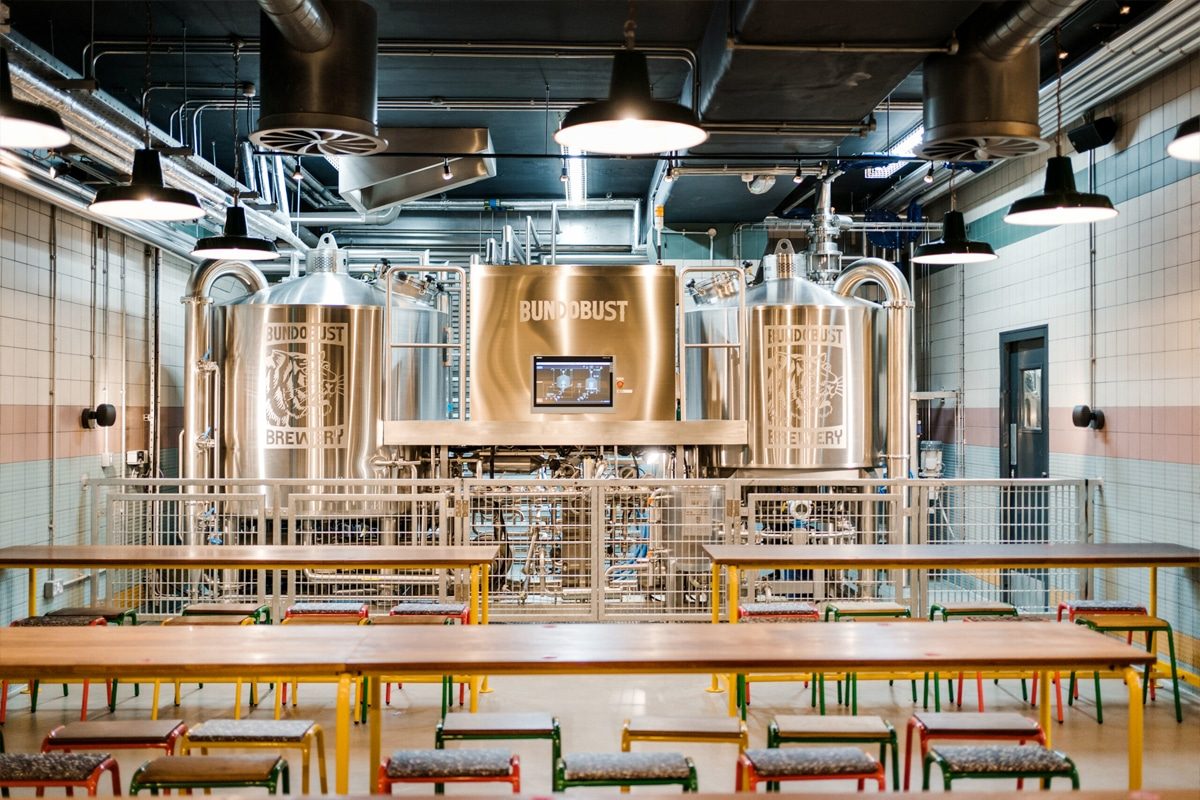
Financial Considerations and Budgeting
Estimating Startup Costs
Before you can embark on your brewing journey, you need to have a clear understanding of the upfront costs involved in launching your brewery. Startup costs typically include:
- Equipment: The heart of any brewery, equipment costs can vary significantly depending on the size and scale of your operation. This includes brewing kettles, fermentation tanks, cooling systems, packaging equipment, and more.
- Facility Lease or Purchase: Whether you’re leasing a commercial space or purchasing a property outright, real estate costs are a significant consideration. Factor in rent, utilities, renovations, and any necessary permits or zoning requirements.
- Licensing and Permits: Obtaining the necessary licenses and permits to operate a brewery can be a complex and costly process. This includes federal, state, and local permits, as well as health and safety certifications.
- Marketing and Branding: Building brand awareness and attracting customers requires investment in marketing and branding efforts. Budget for website development, signage, promotional materials, and advertising campaigns.
- Working Capital: Don’t forget to budget for working capital to cover ongoing expenses such as payroll, raw materials, packaging supplies, and overhead costs during the initial startup phase.
Creating a Budget
Once you’ve estimated your startup costs, it’s time to create a comprehensive budget that outlines your projected expenses and revenue streams. A well-defined budget serves as a roadmap for financial planning and helps you stay on track as you launch and grow your brewery. Here are some steps to consider when creating your budget:
- Identify Fixed and Variable Costs: Categorize your expenses into fixed costs (e.g., rent, utilities, insurance) and variable costs (e.g., raw materials, packaging, marketing). This will help you prioritize spending and allocate resources more effectively.
- Set Realistic Revenue Projections: Based on market research and demand forecasting, estimate your projected sales volumes and revenue streams. Consider factors such as pricing strategy, distribution channels, and seasonality when setting revenue targets.
- Account for Contingencies: Building a buffer for unexpected expenses or delays is essential in any budgeting process. Factor in contingencies for equipment repairs, regulatory compliance issues, or other unforeseen challenges that may arise.
- Review and Revise Regularly: A budget is not set in stone; it’s a living document that should be reviewed and revised regularly based on actual performance and changing market conditions. Stay vigilant and adjust your budget as needed to ensure financial stability and sustainability.
Securing Financing
Once you have a clear understanding of your startup costs and revenue projections, you’ll need to secure financing to fund your brewery venture. There are several financing options available to aspiring brewers, including:
- Self-Funding: Using personal savings or assets to finance your brewery startup is a common option for many entrepreneurs. While self-funding offers full control and autonomy, it may limit the scale and scope of your brewery’s operations.
- Bank Loans: Traditional bank loans are a popular choice for financing brewery startups, offering competitive interest rates and flexible repayment terms. However, securing a bank loan may require a solid business plan, collateral, and a good credit history.
- Investors: Seeking investment from angel investors, venture capitalists, or other private investors can provide the capital needed to launch and grow your brewery. Be prepared to pitch your business idea and demonstrate its potential for profitability and growth.
- Crowdfunding: Platforms like Kickstarter, Indiegogo, and GoFundMe offer alternative funding options for brewery startups. Crowdfunding allows you to raise capital from a large number of individuals in exchange for rewards, equity, or pre-sale offers.
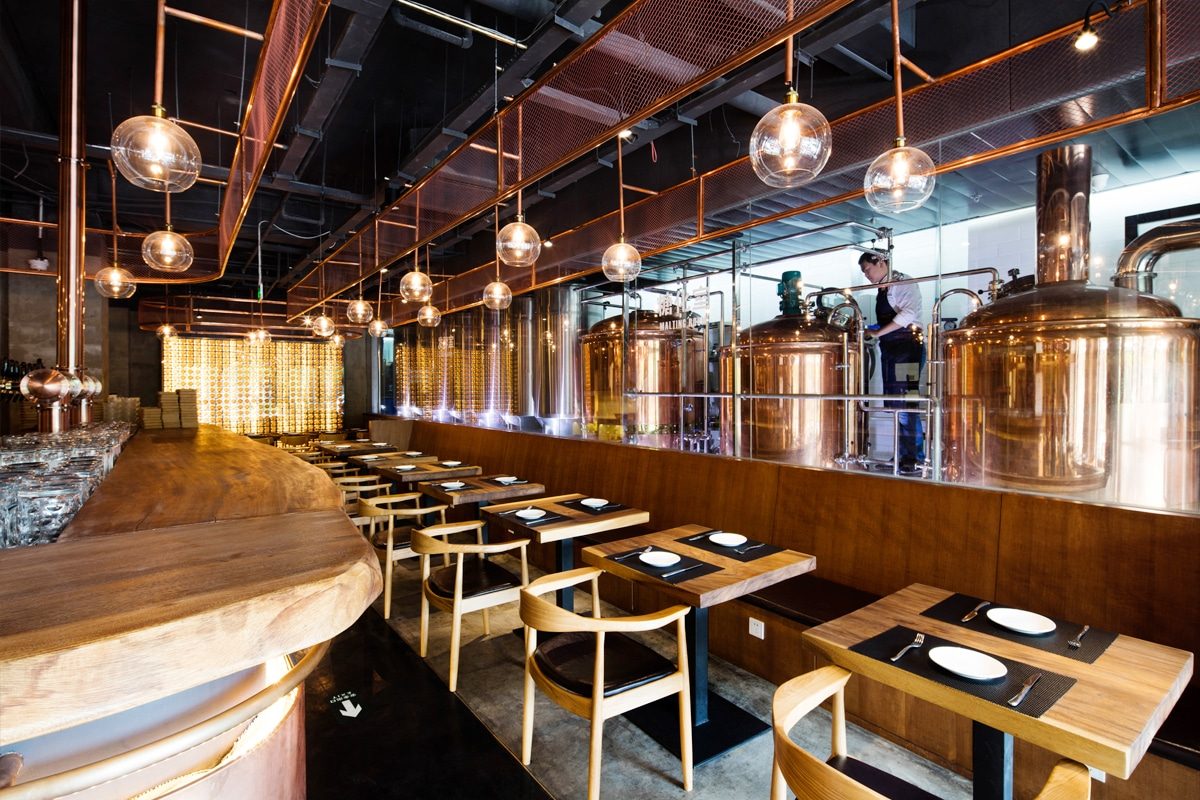
Equipment Selection and Brewery Layout
Equipment Selection
Selecting the right brewing equipment is essential to ensure consistent quality, efficiency, and scalability in your brewery. Consider the following factors when choosing equipment:
- Brewing capacity: Determine your desired production volume and batch sizes to select equipment that can accommodate your brewing needs. Choose brewing kettles, mash tuns, and fermentation tanks with appropriate capacities to meet demand while allowing for future growth.
- Quality and durability: Invest in high-quality, durable equipment that can withstand the rigors of daily brewing operations. Look for stainless steel construction, reputable brands, and warranties that provide peace of mind and long-term reliability.
- Versatility and flexibility: Choose equipment that offers versatility and flexibility to brew a wide range of beer styles and recipes. Look for features such as adjustable temperature control, variable-speed pumps, and modular designs that allow for customization and adaptation to evolving brewing techniques.
- Efficiency and automation: Embrace automation and technology to streamline brewing processes and improve efficiency. Consider equipment with built-in automation features, digital controls, and data monitoring capabilities to optimize brewing parameters and ensure consistency and quality in every batch.
- Safety and compliance: Prioritize safety and regulatory compliance when selecting brewing equipment. Choose equipment that meets industry standards and regulatory requirements for food safety, sanitation, and occupational health to protect your employees and customers.
Brewery Layout Design
Designing an efficient brewery layout is essential to maximize space utilization, workflow efficiency, and safety in your brewing facility. Consider the following principles when designing your brewery layout:
- Flow and accessibility: Plan your brewery layout to optimize the flow of materials, equipment, and personnel throughout the brewing process. Minimize unnecessary movement and congestion by organizing brewing stations, storage areas, and utilities in a logical and accessible manner.
- Workflow efficiency: Design your brewery layout to facilitate a smooth and efficient brewing workflow, from raw material handling and mashing to fermentation, conditioning, and packaging. Create designated zones for each stage of the brewing process and minimize bottlenecks and obstacles that could disrupt workflow.
- Space utilization: Make the most of your brewery space by maximizing vertical and horizontal storage and production areas. Utilize mezzanines, shelving, and storage racks to optimize space utilization without compromising accessibility or safety.
- Safety and ergonomics: Prioritize safety and ergonomics in your brewery layout to minimize the risk of accidents and injuries. Ensure clear pathways, adequate lighting, and ergonomic workstations to create a safe and comfortable environment for brewery staff.
- Future expansion: Plan for future growth and expansion by designing a brewery layout that allows for scalability and flexibility. Allocate space for additional equipment, storage, and production areas to accommodate increased demand and evolving brewing needs.
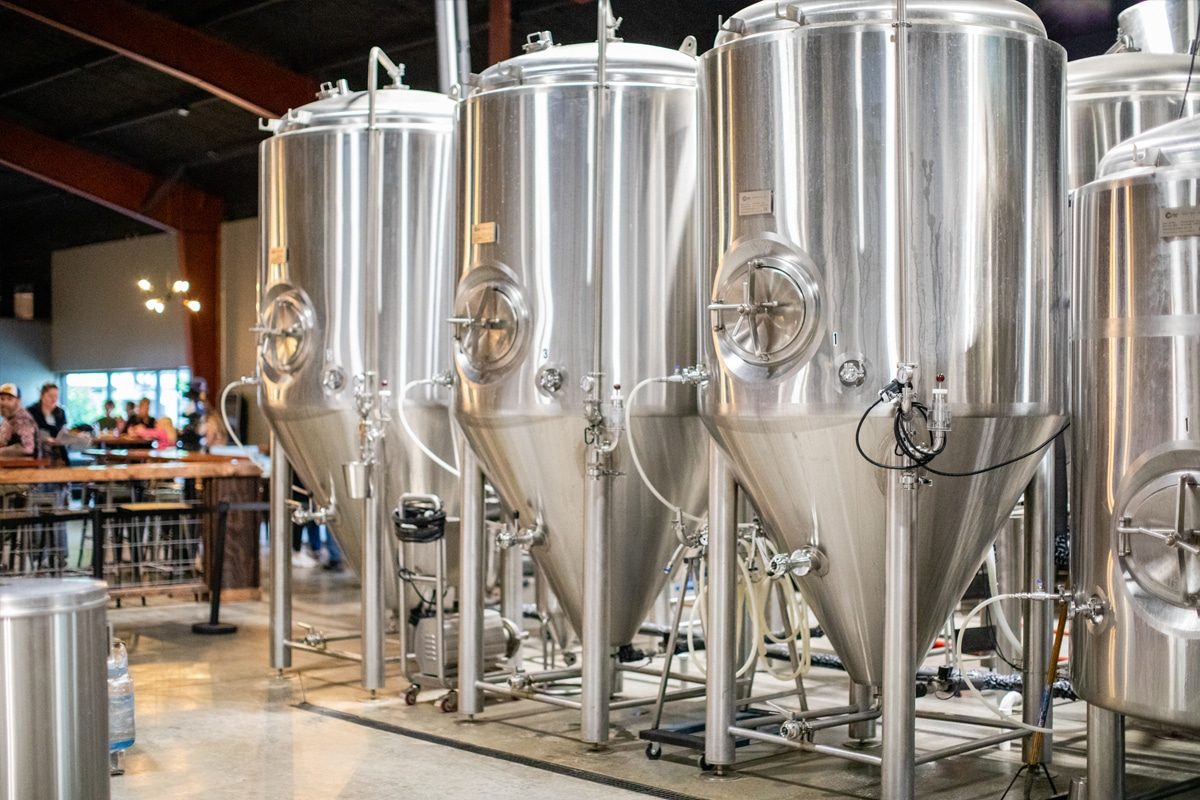
Production Capacity and Scalability
Assessing Production Goals
Before selecting the size of your brewery, it’s essential to assess your production goals and anticipated demand. Consider the following factors:
- Market demand: Analyze market trends, consumer preferences, and competitive dynamics to gauge demand for craft beer in your target market. Identify niche opportunities and underserved segments that align with your brewery’s offerings.
- Sales projections: Based on market research and demand forecasting, estimate your projected sales volumes and revenue targets. Consider factors such as pricing strategy, distribution channels, and seasonality when setting sales projections.
- Operational capacity: Evaluate your brewery’s operational capabilities, including equipment, manpower, and production processes. Determine the maximum output your brewery can achieve efficiently and consistently without compromising quality.
Planning for Scalability
In addition to assessing current production needs, it’s essential to plan for scalability and future growth in your brewery. Consider the following strategies:
- Flexible equipment: Invest in brewing equipment and infrastructure that can accommodate future expansion and increased production volumes. Choose modular designs and scalable solutions that allow for easy upgrades and additions.
- Space planning: Design your brewery layout with scalability in mind, allocating space for additional equipment, storage, and production areas as needed. Consider vertical expansion options such as mezzanines or additional floors to maximize space utilization.
- Distribution strategy: Develop a distribution strategy that can scale with your brewery’s growth, incorporating both direct-to-consumer and wholesale distribution channels. Build relationships with distributors and retailers to expand your market reach over time.
- Financial planning: Ensure that your brewery’s financial planning accounts for future growth and expansion. Budget for capital expenditures, operational expenses, and working capital to support increased production volumes and market expansion.
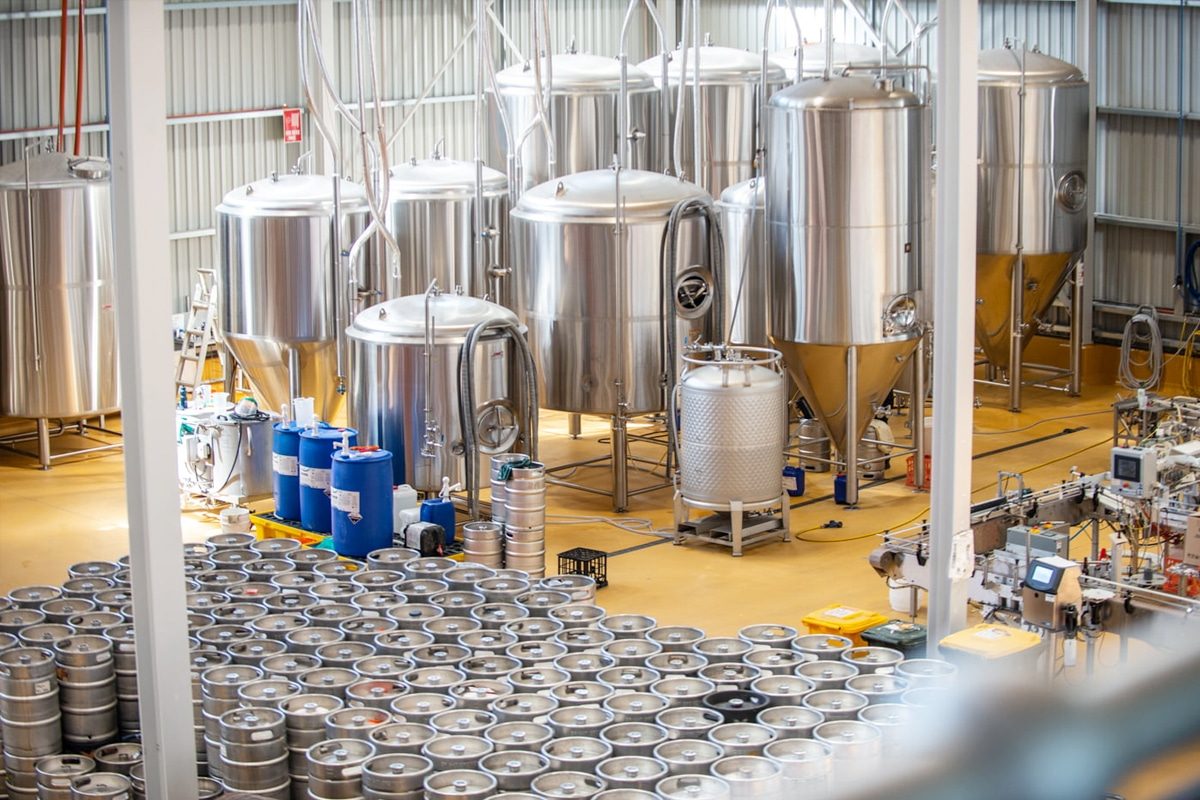
Distribution Strategy and Logistics
Understanding Distribution Channels
Craft beer distribution encompasses a variety of channels through which beer is delivered from the brewery to consumers. Understanding these channels and selecting the right mix for your brewery is essential. Consider the following options:
- Direct-to-consumer (DTC): Selling beer directly to consumers through taprooms, brewpubs, and online sales channels offers higher profit margins and greater control over the customer experience. DTC sales also foster direct engagement with customers, allowing for valuable feedback and brand loyalty.
- Wholesale distribution: Distributing beer through wholesalers, distributors, and retailers allows you to reach a broader market and expand your brand’s presence. Wholesale distribution requires partnerships with distributors and retailers to get your beer into bars, restaurants, liquor stores, and other outlets.
- Self-distribution: Some breweries choose to self-distribute their beer, bypassing wholesalers and distributing it directly to retailers. While self-distribution offers greater control and flexibility, it requires investment in distribution infrastructure and logistics capabilities.
Developing a Distribution Strategy
Crafting an effective distribution strategy involves careful planning and consideration of market dynamics, customer preferences, and operational capabilities. Consider the following steps when developing your distribution strategy:
- Market analysis: Analyze market trends, consumer preferences, and competitive dynamics to identify opportunities and challenges in your target market. Assess demand for craft beer, distribution channels, and market saturation to inform your distribution strategy.
- Channel selection: Determine the most suitable distribution channels for your brewery based on your target market, production capacity, and brand positioning. Evaluate the pros and cons of direct-to-consumer sales, wholesale distribution, and self-distribution to find the right mix for your brewery.
- Partner selection: Choose distribution partners, such as wholesalers and retailers, that align with your brewery’s values, brand identity, and market objectives. Build relationships with distributors who understand your product and have the network and capabilities to effectively market and sell your beer.
- Territory expansion: Gradually expand your distribution territory as your brewery grows and demand increases. Start with local markets and gradually expand regionally, nationally, or even internationally as you build brand recognition and distribution networks.
Managing Logistics
Effective logistics management is essential to ensure smooth and efficient distribution of your beer from the brewery to consumers. Consider the following logistics considerations:
- Inventory management: Implement inventory management systems and processes to track beer production, storage, and distribution. Maintain optimal inventory levels to meet demand while minimizing excess inventory and storage costs.
- Transportation: Choose reliable transportation partners and shipping methods to transport beer from the brewery to distribution centers and retailers. Consider factors such as shipping costs, transit times, and temperature control to ensure product quality and freshness.
- Warehousing: Select warehousing facilities that meet your storage and distribution needs, including temperature-controlled storage for perishable products. Optimize warehouse layout and organization to maximize space utilization and facilitate efficient order fulfillment.
- Order fulfillment: Streamline order fulfillment processes to ensure timely and accurate delivery of beer to customers. Use technology and automation to track orders, manage shipments, and communicate with distribution partners and customers.
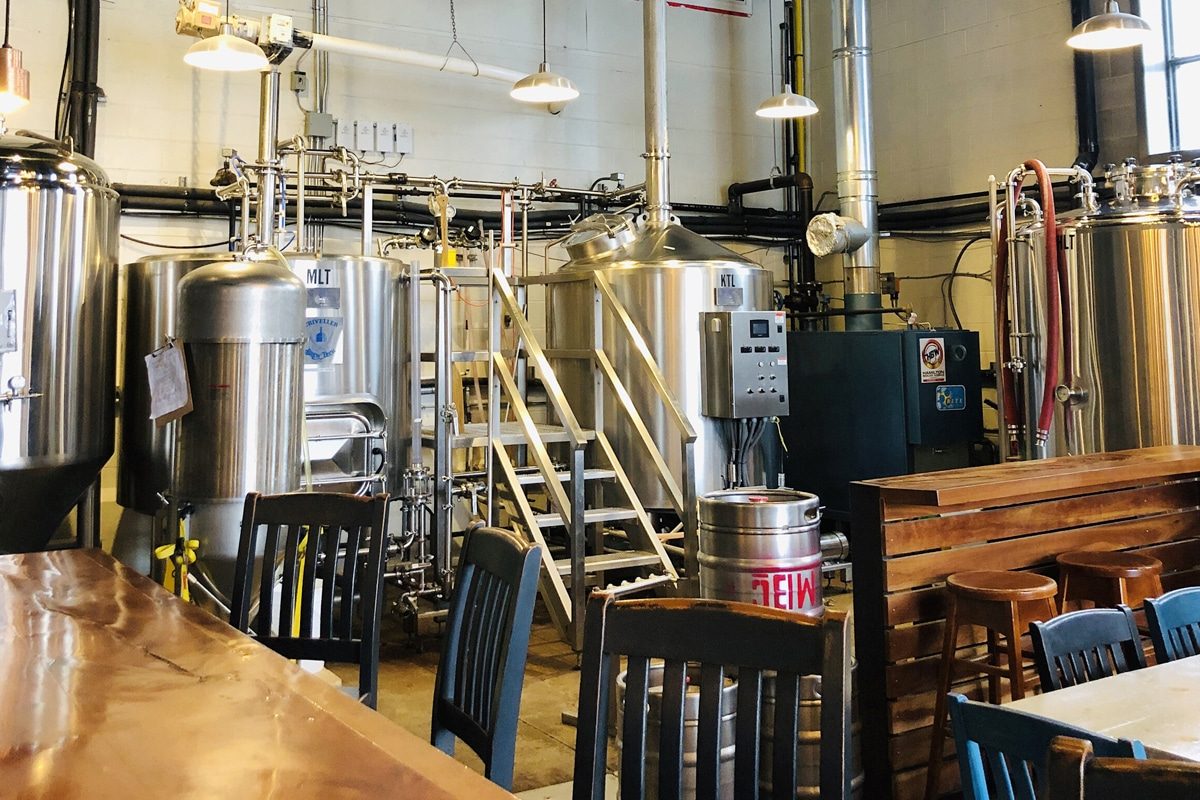
Regulatory Compliance and Licensing
Understanding Regulatory Agencies
Breweries are subject to regulation by various government agencies that oversee different aspects of the brewing industry. Key regulatory agencies include:
- Alcohol and Tobacco Tax and Trade Bureau (TTB): The TTB is responsible for regulating the production, labeling, and taxation of alcoholic beverages at the federal level in the United States. Breweries must obtain federal permits and approvals from the TTB to operate legally and comply with federal regulations.
- State alcoholic beverage control (ABC) Boards: State ABC boards regulate the sale, distribution, and taxation of alcoholic beverages at the state level. Breweries must obtain state permits and licenses from the appropriate ABC board to operate within a specific state and comply with state regulations.
- Local authorities: Local governments, such as city or county authorities, may also have regulations and zoning requirements that apply to breweries. Breweries must obtain local permits and approvals to comply with zoning ordinances, building codes, and health and safety regulations.
Licensing and Permitting Requirements
Starting a brewery requires obtaining various permits and licenses from regulatory agencies at the federal, state, and local levels. Common licensing and permitting requirements include:
- Federal brewer’s notice: Breweries must obtain a Brewer’s Notice from the TTB to legally produce and distribute beer at the federal level. The Brewer’s Notice authorizes breweries to engage in brewing operations and imposes requirements for labeling, recordkeeping, and taxation.
- State brewery license: Breweries must obtain a brewery license from the appropriate state ABC board to operate legally within a specific state. State brewery licenses authorize breweries to manufacture, distribute, and sell beer within the state and may have specific requirements for production limits, distribution channels, and sales locations.
- Local permits and approvals: Breweries must obtain various local permits and approvals from city or county authorities to comply with zoning ordinances, building codes, and health and safety regulations. Common local permits include zoning permits, building permits, health permits, and fire safety permits.
- Additional permits and licenses: Depending on the size and scope of the brewery operation, additional permits and licenses may be required for specific activities such as retail sales, on-premises consumption, outdoor events, or off-site distribution. Breweries should consult with regulatory authorities to determine the specific permits and licenses needed for their operation.
Compliance and Recordkeeping
Maintaining compliance with regulatory requirements involves ongoing recordkeeping, reporting, and adherence to regulatory standards. Breweries must:
- Keep accurate records: Maintain detailed records of beer production, inventory, sales, and distribution to demonstrate compliance with regulatory requirements and facilitate reporting and auditing.
- Submit required reports: Submit periodic reports and filings to regulatory agencies, including production reports, tax filings, and license renewals, to maintain compliance with regulatory requirements.
- Adhere to labeling regulations: Ensure compliance with labeling regulations set forth by the TTB, including requirements for alcohol content, ingredients, health warnings, and brand identification on beer labels and packaging.
- Monitor regulatory changes: Stay informed about changes in federal, state, and local regulations that may impact brewery operations and adjust practices and procedures accordingly to maintain compliance.
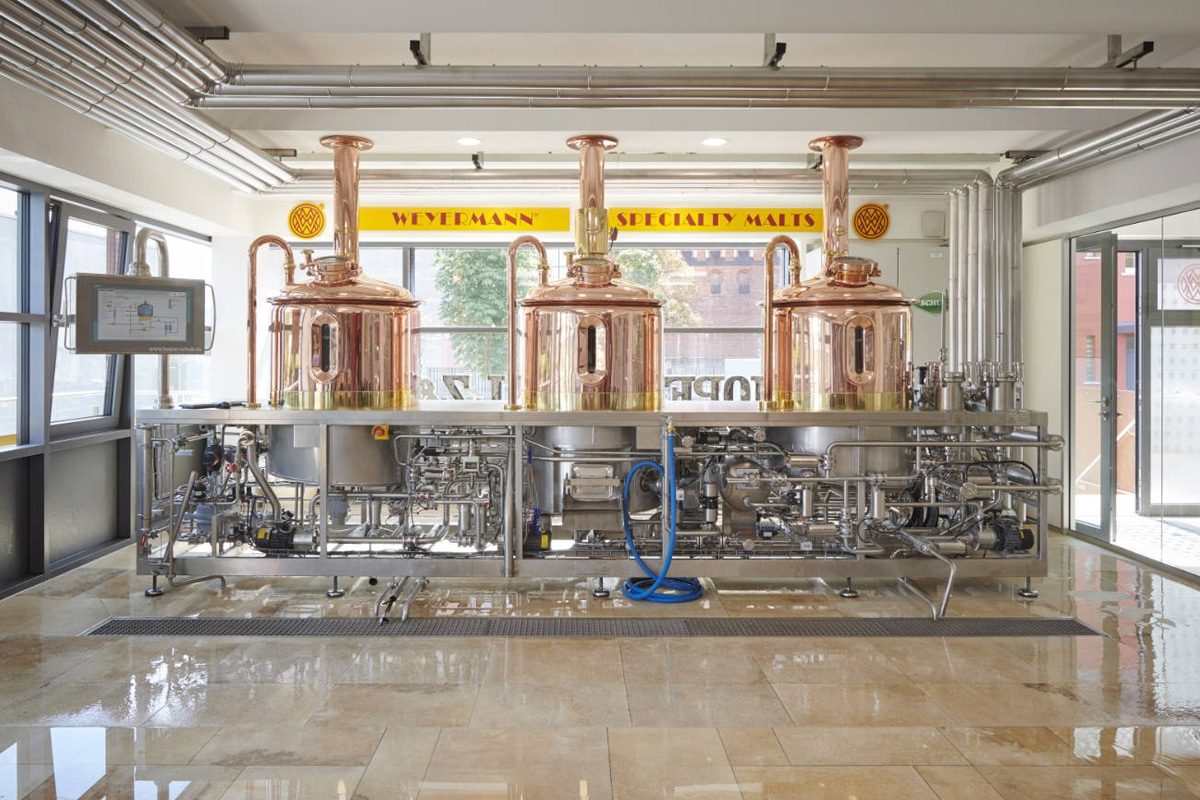
Branding, Marketing, and Customer Experience
Crafting Your Brand Identity
Your brewery’s brand identity is more than just a logo or a name; it’s the essence of who you are and what you stand for as a brewery. Consider the following elements when crafting your brand identity:
- Mission and values: Define your brewery’s mission and core values, articulating what sets you apart and guides your decision-making process.
- Brand personality: Develop a distinctive brand personality that reflects the unique characteristics and qualities of your brewery. Consider attributes such as authenticity, creativity, innovation, and community engagement.
- Visual identity: Create a cohesive visual identity that encompasses your brewery’s logo, color palette, typography, and design elements. Ensure consistency across all branding materials, including packaging, merchandise, and marketing collateral.
- Storytelling: Tell the story behind your brewery, sharing the journey, inspiration, and passion that drives your craft. Use storytelling to connect with customers on an emotional level and create meaningful connections.
Marketing Strategies
Effective marketing is essential for raising awareness, attracting customers, and driving sales for your brewery. Consider the following marketing strategies to promote your brewery and connect with your target audience:
- Digital marketing: Leverage digital channels such as social media, email marketing, and online advertising to reach beer enthusiasts and engage with potential customers. Share behind-the-scenes content, brewery updates, and special promotions to build excitement and foster community engagement.
- Events and sponsorships: Host events such as beer tastings, brewery tours, and taproom gatherings to showcase your beers and create memorable experiences for customers. Sponsor local festivals, community events, and charity fundraisers to increase brand visibility and support your community.
- Collaborations: Partner with other breweries, businesses, and organizations to collaborate on special beer releases, events, and marketing initiatives. Collaborations can help expand your reach, attract new customers, and foster creativity and innovation in brewing.
- Branding and packaging: Invest in distinctive branding and packaging that stands out on store shelves and captures the attention of consumers. Use eye-catching labels, creative packaging designs, and storytelling elements to differentiate your beers and create a memorable brand experience.
Customer Experience
Delivering exceptional customer experiences is key to building brand loyalty and fostering repeat business. Consider the following strategies to enhance the customer experience at your brewery:
- Hospitality: Create a welcoming and inviting atmosphere in your taproom or brewery tasting room, where customers can relax, socialize, and enjoy your beers. Train staff to provide friendly, knowledgeable service and cultivate a culture of hospitality and customer care.
- Tasting room experience: Offer brewery tours, guided tastings, and educational experiences that allow customers to learn about your beers and brewing process. Create a comfortable and enjoyable environment with seating areas, outdoor spaces, and entertainment options.
- Customer engagement: Engage with customers both online and offline, soliciting feedback, responding to inquiries, and fostering dialogue through social media, email, and in-person interactions. Show appreciation for customer support through special offers, loyalty programs, and exclusive events.
- Community involvement: Be an active participant in your local community, supporting charitable causes, sponsoring events, and partnering with local businesses. Build relationships with customers, neighbors, and community leaders to become a valued and trusted member of the community.
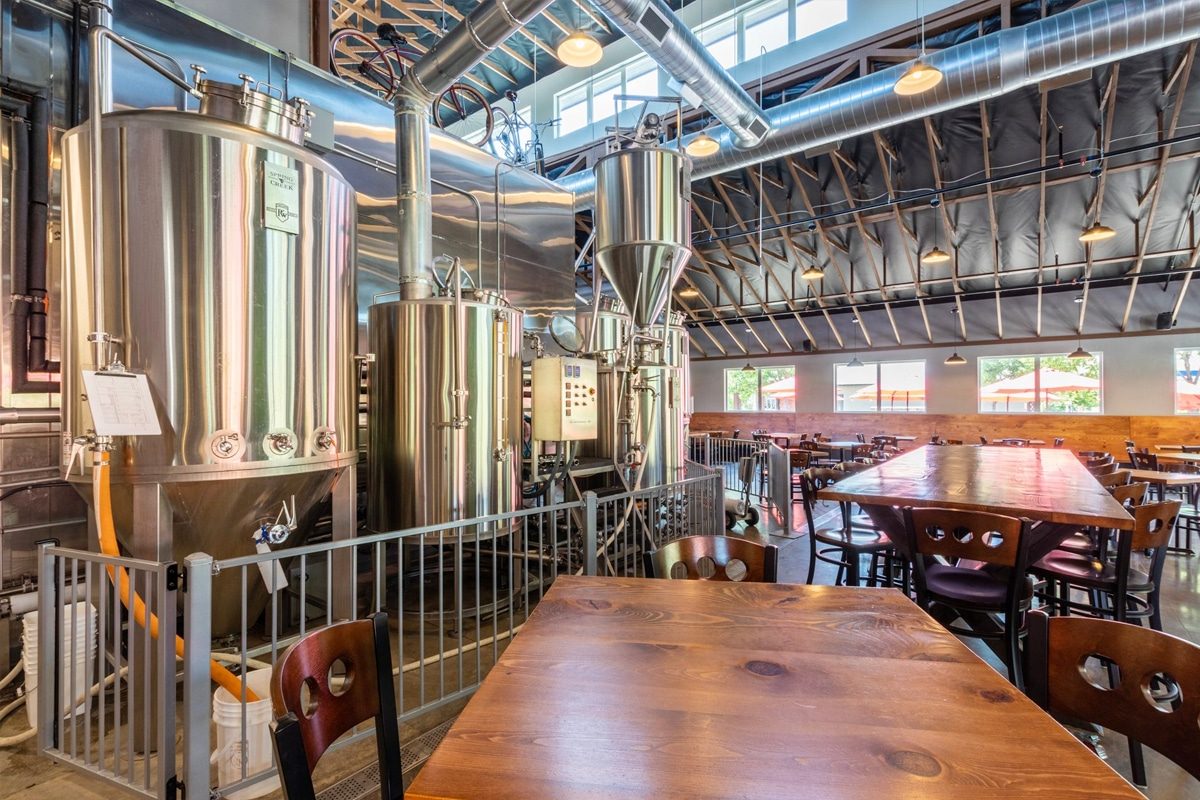
Summarize
